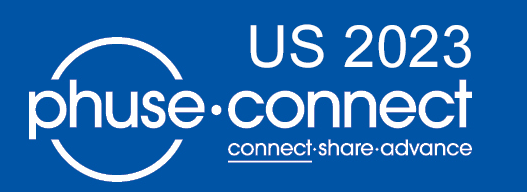
 BioPier is proud to announce to present in the 2023 PHUSE US Connect, a premier event in clinical data science, taking place in Orlando, FL from March 5-8, 2023, and the 2023 PharmaSUG, the Pharmacutical SAS User Group Conference, taking place in San Francisco May 14-17, 2023.
BioPier is proud to announce to present in the 2023 PHUSE US Connect, a premier event in clinical data science, taking place in Orlando, FL from March 5-8, 2023, and the 2023 PharmaSUG, the Pharmacutical SAS User Group Conference, taking place in San Francisco May 14-17, 2023.
PhUSE is a hub for advancing healthcare and the life sciences, PHUSE provides a valuable platform for discussing and solving the industry's most pressing challenges. BioPier's presentations will add to the rich discourse and further the progress in the field of Biometrics.
PharmaSUG is the largest professional conference of the year for statistical programmers, statisticians, data managers, researchers, and others who analyze data in the life sciences.
At 2023 PhUSE, BioPier will present two (2) innovative papers on cutting-edge topics in Biometrics, including Interactive SAP Figure Shell Creation and Metadata-Driven CTCAE Toxicity Grade Automation.

Zhaoyu Xie Ph.D., Pragathi Mudundi BioPier Inc.
ABSTRACT
The Common Terminology Criteria for Adverse Events (CTCAE) published by the National Cancer Institute (NCI) is widely used in clinical trials to grade toxicity of laboratory results by a range from 1 (mild) to 5 (death). Staying up to date with various CTCAE versions is critical and tedious in data handling. This paper introduces a robust utility SAS macro to calculate toxicity grade in a more systematic way. The grading levels in the CTCAE contain numeric thresholds and investigator assessments. We establish a spreadsheet to translate the quantitative criteria into SAS language. Then the SAS macro will read those criteria as macro variables and assign toxicity grades, which can be applied in both SDTM.LB and ADaM.ADLB across multiple studies. It can be easily adapted to reflect multiple CTCAE versions or to satisfy sponsor-defined criteria by modifying the spreadsheet.
Ji Qi Ph.D., Qisen Luan, BioPier Inc.
ABSTRACT
Figures are essential and critical elements in clinical trial data analysis and reporting. We propose a tool for the interactive generation of mock-up biostatistical figures using Excel and SAS. An excel file holds sample preset data and figure attributes, such as title, axis labels, tick definitions, groups, group attributes, etc. Actual values of data or attributes could be modified following the samples. Then a SAS macro calls the excel file to generate the plots and output the associated SAS program code. The figures produced by this tool could help statisticians choose the right type of figures for visualizing different data, tailor figure details, generate mock-up shells, and quickly generate additional figures for reporting/presentation purposes if needed. The SAS code generated in the designing stage could be shared with programmers to produce the figures for study reports later.

Xi Qian Ph.D., Chengfei Lu Ph.D., BioPier, Inc.
ABSTRACT
Missing data may seriously compromise inferences from clinical trials and thus undermine the reliability and interpretability of results from clinical trials. Although missing data presents challenges for any clinical trials, these challenges, particularly in data analysis, are greater than expected for trials conducted during the COVID-19 pandemic. Statistical methods for dealing with missing data are categorized based on the types of assumptions that are made about the missing-data mechanisms. In this paper, we first introduce the definitions of three missing-data mechanisms and summarize commonly used statistical methods for handling missing data. We then focus on multiple imputation for both continuous and dichotomous outcome data and discuss issues on its practical implementation, including developing the imputation models, how to handle data with a monotone or non-monotone missing pattern, the number of imputed data sets that need to be created, and how to examine the robustness of missing-data assumption with sensitivity analysis. We illustrate the application of multiple imputation through analyses of disease response rate and quality-of-life score data on lung cancer patients in a hypothetical superiority trial. Statistical software codes for conducting multiple imputation in SAS are provided.
Meiling Gao, Xi Qian Ph.D., Hui Mao Ph.D., BioPier Inc.
ABSTRACT
Health Technology Assessment (HTA) is essential in developing medical technologies such as drugs and devices. HTA provides input into policymaking by summarizing the properties of medical innovations in terms of their safety, efficacy, cost-effectiveness, and other consequences. Pharmaceutical companies must submit such information to a German Dossier before launching their products in Germany. The Federal Joint Committee (G-BA) will conduct the HTAs according to the regulations laid out in law. Statistical results play a fundamental role in supporting every HTA submission, including the German Dossier. However, pharmaceutical practitioners often need help with the varying policies and best practices in HTA submissions. This paper aims to fill the gap by providing guidelines for conducting statistical analysis in German Dossier submissions. We will cover the statistical strategies and common pitfalls when preparing the dossier submission. The paper will focus on a comprehensive discussion of the most used statistical methods for analyzing a broad range of data and endpoints, including dichotomous, continuous, time-to-event data, etc. For each category of analysis, we will begin with an introduction to the relevant statistical basics, followed by a description of the sample data. We will also provide sample SAS codes and guidelines for interpreting the results.
Pragathi Mudundi, Zhaoyu Xie Ph.D., BioPier Inc.
ABSTRACT
SDTM (Study Data Tabulation Model) is one of the required standards for data submission to the FDA and following SDTM-IG is the conventional practice. However, submitting Study Datasets for Vaccines to the Office of Vaccines Research and Review (OVRR) in FDA/CBER division has specific rules and few are deviated from SDTM-IG. They are often ignored in practice, which may result in compliance issues and even rejection of vaccine study submissions. In this paper, we will cover the rectification work for a vaccine study to address SDTM compliance with FDA CBER/OVRR rules, which includes re-mapping reactogenicity data, recording solicited AEs to CE and FACE; mapping unsolicited AEs, MAAE (PIMMC, NOCD) and death to AE and FAAE domains; relocating rule-specified information into domains where they belong, and covering the unique mapping of biological assay data, immunogenicity, and efficacy data.
Hui Mao Ph.D., Lixin Gao, BioPier Inc.
ABSTRACT
Pharmacokinetics (PK) analysis is an important part of clinical trials that explores drug effects in humans. Noncompartmental analysis (NCA) is a model-independent and cost-effective method as the industry consensus. PK commercial software WinNonlin(tm) and open-source tools are traditional approaches for such analyses. This paper presents an alternative SAS-based PK NCA method that derives and validates PK parameters like Cmax, Tmax, T1/2, AUClst, AUCinf, CLO, Lambdaz, Half-Life Lambdaz, Vz, etc. The key benefit of such a method is to promote operational efficiency and compliance because no intermediate software is needed. It can be directly embedded in the statistical programming to create CDISC SDTM PP datasets, PK summary tables, and figures. The SAS code can be directly used for regulatory submission.